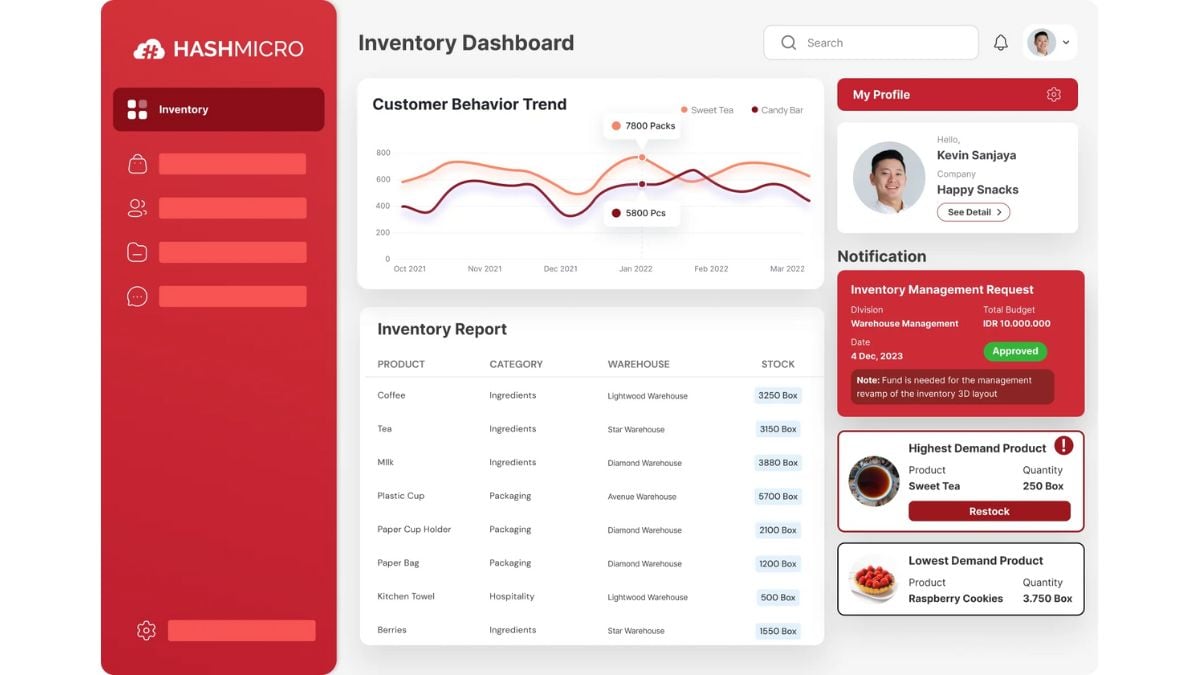What if you could predict exactly where, when, and how much stock you need—across every tier of your supply chain? Too often, managers find themselves overwhelmed by the chaos of uncoordinated warehouses, unpredictable demand, and sluggish replenishment.
Without cohesive MEIO, companies battle stockouts at one echelon while others are bogged down by excess inventory, leading to frustrated customers, wasted investment, and logistical gridlock. The inability to share real-time data and align forecasts across nodes only compounds these issues.
A notable thesis from De La Salle University presented a multi-echelon model that tackles inventory allocation and site selection in the Philippines, proving that lean, integrated systems can significantly reduce overall supply chain costs.
Eager to uncover how MEIO can turn complexity into clarity? Dive deeper into this article to discover best practices and technology tools that can streamline your operations and boost your bottom line.
Table of Contents

Key Takeaways
|
What is Multi-Echelon Inventory Optimization (MEIO)?
Multi-Echelon Inventory Optimization (MEIO) is a strategic approach to inventory management that optimizes stock placement across all levels of the supply chain. Unlike traditional methods, MEIO considers the interdependencies between each distribution point to ensure cost efficiency and product availability.
While single-inventory or single-echelon optimization focuses on individual locations, it often results in inefficiencies in larger, more complex networks. MEIO overcomes this by aligning inventory decisions across multiple echelons, balancing supply and demand more accurately.
With a multi-tier inventory management perspective, businesses can reduce excess stock, minimize stockouts, and improve service levels. MEIO provides a holistic view of inventory, making it a powerful solution for companies aiming for agile and data-driven supply chain operations.
Key Pillars of Multi-Echelon Inventory Optimizations
Implementing a successful multi-echelon inventory optimization (MEIO) strategy depends on several core pillars that work together to enhance supply chain efficiency. These key elements enable businesses to align operations across all tiers of the supply chain, ensuring optimized inventory management throughout the entire supply chain.
Here are the foundational pillars of MEIO that every business should understand and implement:
1. Well-defined supplier network
A robust MEIO strategy begins with a structured and collaborative supplier network. This network outlines the quantity and physical locations of suppliers, warehouses, and retail points across all phases of the supply chain.
Businesses must also account for critical variables such as lead times, transportation costs, and shipment methods. By mapping out the movement of materials and associated costs, companies can build a more resilient and cost-efficient multi-tier inventory management software.
2. Precise demand forecasting
Accurate demand forecasting plays a vital role in any multi-echelon inventory optimization effort. It enables companies to anticipate customer demand at every level of the supply chain, thereby minimizing uncertainty and overstocking.
With reliable forecasting, stakeholders can make informed inventory decisions, ensuring timely replenishment across multiple locations. This proactive approach supports better service levels and keeps supply chains agile in the face of shifting market needs.
3. Optimized inventory levels
To fully benefit from MEIO, companies must maintain optimal inventory levels tailored to each echelon of their supply chain. This involves understanding how much stock to hold, where it should be stored, and when to replenish it.
Leveraging inventory management software enables businesses to track inventory usage, identify trends, and prevent shortages or excesses. An echelon-based stock optimization approach ensures smoother operations and improves supply chain responsiveness.
4. Simplified order processes
Once inventory needs are identified, companies must apply standard formulas, such as the Economic Order Quantity (EOQ), safety stock, and reorder points. These calculations ensure inventory levels align with supplier capabilities and customer expectations.
For complex multi-tier networks, ABC classification helps prioritize key products by value and turnover rate. A streamlined order process not only reduces waste but also strengthens the financial health of the entire supply chain, exemplified by an ideal multi-echelon inventory system in action.
5. Focus on data and analytics
Data is the backbone of any effective multi-echelon inventory optimization MEIO strategy. Access to real-time analytics enables businesses to track supplier performance, identify demand fluctuations, and monitor inventory status across all locations.
With actionable insights, teams can make faster, data-driven decisions that enhance inventory control and boost efficiency. As a result, MEIO becomes more than just a logistics model, it becomes a dynamic, insight-powered framework for continuous improvement.
What are The Benefits of MEIO?
Adopting Multi-Echelon Inventory Optimization (MEIO) can transform the way companies manage inventory across their supply chains. Rather than treating each stage in isolation, MEIO offers a connected, data-driven framework for efficiently and profitably maintaining stock.
Below are the key benefits of implementing MEIO that support both operational agility and financial growth:
1. Enhanced cost-efficiency
Without an optimized inventory strategy, companies often hold excess stock at multiple distribution points to prevent stockouts, which leads to waste and capital being tied up in underperforming inventory.
This outdated approach inflates storage costs and reduces overall profitability. Multi-echelon inventory optimization MEIO helps businesses allocate capital more wisely by identifying the most efficient stock levels needed across all tiers. As a result, companies avoid overstocking while ensuring smooth inventory flow throughout the supply chain.
2. Elevated customer service
Inaccurate demand forecasts and poorly distributed inventory can lead to product shortages, ultimately disappointing customers. These service failures can harm a brand’s reputation and reduce customer loyalty.
With multi-echelon inventory optimization, businesses can forecast and position the right inventory at the right place and at the right time. This enables better service levels, ensuring product availability and higher customer satisfaction across all locations in a multi-tier inventory management setup.
3. Improved management of supply or market volatility
Volatility in supply or demand can catch businesses off guard if inventory levels are not optimized. Traditional models often fail to respond quickly to changes in market conditions or disruptions in the supply chain.
MEIO enables companies to maintain flexible and responsive inventory strategies by forecasting needs across the entire distribution network. This agility enhances the company’s ability to respond strategically to volatility, making it a key benefit in any multi-echelon inventory system.
4. Enhanced management of lead times
Unpredictable supplier lead times can disrupt replenishment schedules, resulting in stockouts or excessive inventory. Companies without strategic inventory optimization often struggle to adapt to these fluctuations effectively.
Echelon-based stock optimization using MEIO provides visibility and control over stock levels relative to varying lead times. This empowers organizations to stay ahead of delays or early arrivals, ensuring consistent inventory availability throughout the chain.
5. Improved return on investment
Excessive investment in slow-moving inventory results in poor ROI and limits available working capital. MEIO enables companies to achieve a better balance, holding just enough inventory to meet demand without overstocking.
This not only reduces waste and storage costs but also frees up capital for other revenue-generating activities. Ultimately, multi-echelon inventory optimization MEIO helps businesses improve profitability and achieve stronger, more sustainable returns.
Main Challenges when Implementing MEIO
While Multi-Echelon Inventory Optimization (MEIO) offers significant advantages for modern supply chains, its implementation is not without obstacles. Businesses must be prepared to address several operational and technological challenges when shifting from traditional inventory strategies to a multi-tier inventory management system.
Below are the key hurdles that often arise during MEIO implementation, along with insights on how to overcome them:
1. Data management
One of the biggest challenges in implementing multi-echelon inventory optimization MEIO is managing data across various supply chain levels. Accurate, real-time inventory data is essential for informed decision-making, yet this information is often fragmented or inconsistently recorded.
Since each tier may operate under different inventory policies and controls, consolidating data becomes a complicated process. Without centralized visibility, businesses struggle to forecast demand, track stock levels, and coordinate effectively.
Furthermore, companies must ensure that sensitive data remains secure while still being accessible to all relevant teams, including third-party logistics providers. A reliable data management strategy is essential for enabling effective echelon-based stock optimization and ensuring operational accuracy.
2. Supplier coordination
Another common hurdle in multi-echelon inventory optimization is coordinating efforts with a diverse network of suppliers. In large enterprises, aligning efforts across multiple vendors, each with their own systems and processes, can be time-consuming and complex.
Suppliers play a pivotal role in ensuring timely replenishment and optimal stock levels, making their engagement critical to the success of MEIO. Without proper collaboration, even the most well-structured internal plan can fail due to upstream disruptions.
Implementing digital tools that promote visibility and two-way communication can significantly enhance supplier coordination and collaboration. Strengthening supplier relationships and fostering shared accountability are essential to implementing a seamless multi-echelon inventory management system in practice.
3. Legacy system integration
Many supply chain stakeholders still rely on outdated legacy systems that were never designed to support multi-tier inventory management. These systems typically function in silos, creating gaps in data sharing and limiting real-time collaboration.
Integrating modern MEIO tools with such infrastructure is challenging due to compatibility issues and the need for extensive customization. As a result, companies may experience delays or disruptions in rolling out their MEIO strategies.
Transitioning to integrated, cloud-based platforms can bridge these gaps, but it often requires a phased approach and significant investment. For MEIO to deliver its full value, businesses must prioritize replacing or upgrading systems that hinder synchronized supply chain operations.
Types of MEIO
Multi-Echelon Inventory Optimization (MEIO) can be structured in different ways depending on the complexity and design of the supply chain. Understanding the various types of MEIO models is crucial for businesses to select the appropriate optimization approach for their operations.
Here are the four main types of MEIO commonly used in multi-tier inventory management systems:
1. Serial: The serial model is the simplest form of multi-echelon inventory optimization, where each node has one upstream supplier and one downstream client. This multi-echelon inventory example is often found in linear supply chains where products flow step-by-step from raw materials to end consumers.
2. Assembly: In the assembly model, a node is connected to multiple upstream suppliers but only one downstream client. This setup reflects supply chains where a product is assembled using inputs from various sources, making echelon-based stock optimization more complex.
3. Distribution: The distribution model is the opposite of assembly, where a single upstream node (like a central warehouse) supplies multiple downstream nodes. This form of multi-echelon inventory optimization MEIO is typical in retail networks distributing goods to multiple stores or customers.
4. General: The general model is the most flexible and complex, with each node having multiple upstream and downstream connections. It represents real-world multi-tier inventory management environments that require advanced coordination and technology for effective MEIO implementation.
Streamline Your Multi-Echelon Inventory Strategy with HashMicro
HashMicro offers a robust inventory management system designed to support a multi-echelon inventory strategy, enabling businesses to manage stock efficiently across all levels of their supply chain. With intelligent automation, companies can optimize inventory placement, streamline replenishment processes, and reduce manual intervention at every distribution tier.
Experience the power of multi-echelon inventory optimization with HashMicro’s advanced inventory solution through a free demo. Discover how strategic inventory control across multiple warehouses or nodes helps reduce excess stock, improve fulfillment speed, and boost supply chain responsiveness.
Why Choose HashMicro? Our inventory management system is designed to support multi-tier inventory management, featuring tools that ensure synchronized planning, visibility, and control across various echelons. From real-time monitoring to intelligent forecasting, we help you implement a cohesive inventory strategy that drives both efficiency and profitability.
Below are some key features of HashMicro’s inventory management system that support effective multi-echelon inventory optimization MEIO:
- Stocks per Warehouse with Qty on Hand, Forecast In, Forecast Out, and Forecast Qty: When every warehouse becomes transparent, showing what’s in stock, what’s coming, and what’s going out, you gain complete command over your entire inventory landscape. This clarity empowers smarter decisions, smoother stock movement, and eliminates nasty surprises like stockouts or overstocks.
- Stock Forecasting: By letting data tell the story of future demand at each supply chain point, your team can stock smarter, not harder. This foresight eliminates excess inventory while ensuring the right items are always ready when needed.
- Run Rate Reordering Rules: Imagine your system reorders stock precisely when usage patterns indicate it’s time, eliminating guesswork and delays. The result? A steady flow of products, reduced manual errors, and working capital that’s working.
- Stock Reservations & Reporting: When you can lock in stock for high-priority orders, even across multiple warehouses, chaos turns into coordination. This leads to faster fulfillment, fewer mix-ups, and happier customers who get what they want, when they want it.
- Stock Aging Report: Think of it as a time machine for your stock, showing how long every item has been sitting on the shelf. This insight helps clear out aging inventory before it becomes dead weight, improving turnover and freeing up valuable space.
- Fast-Moving & Slow-Moving Stock Analysis: By separating the sprinters from the slowpokes in your inventory, you know exactly what to restock fast and what to rethink. This optimization fine-tunes your strategy and keeps your shelves aligned with real demand.
- FEFO – First Expiry, First Out: By sending out the soon-to-expire items first, your inventory stays fresh and waste is kept to a minimum. It’s a straightforward method with a significant impact, particularly for perishable goods or regulated products.
- Replenishment with Multiple Actions: Utilizing multiple intelligent triggers, such as sales velocity, buffer stock, and real-time levels, replenishment becomes intelligent and automated. This responsiveness keeps your supply chain running smoothly without interruption.
- Picking Wave by Location Priority: When pickers follow a route guided by item priority and location logic, warehouse chaos turns into choreography. That means faster processing, fewer errors, and deliveries that leave on time, every time.
- Integrated with Barcode & QR Code: With every scan, your system gets smarter, tracking every movement instantly and accurately across all echelons. This real-time visibility reduces human error, strengthens traceability, and creates a supply chain you can trust without a doubt.
These features empower your business to implement a successful multi-echelon inventory optimization MEIO strategy, promoting real-time visibility, minimizing inventory risks, and enhancing agility. With HashMicro, your supply chain becomes smarter, leaner, and more resilient, ready to meet today’s challenges and tomorrow’s demands.
Conclusion
Multi-Echelon Inventory Optimization (MEIO) is a robust supply chain strategy that enables businesses to manage inventory across multiple levels using a unified and data-driven approach. By accounting for the interdependencies between each echelon, MEIO helps reduce stock imbalances, improve fulfillment, and enhance overall cost-efficiency.
To implement MEIO effectively, businesses need the right technology that offers visibility, automation, and intelligent forecasting across all inventory points. HashMicro’s inventory management system is designed to support multi-tier inventory management, featuring stock forecasting, real-time warehouse tracking, and intelligent replenishment.
Ready to see how MEIO can transform your inventory strategy? Book a free demo with HashMicro today and experience firsthand how our innovative system can help you maximize operational performance across your entire supply chain.









































